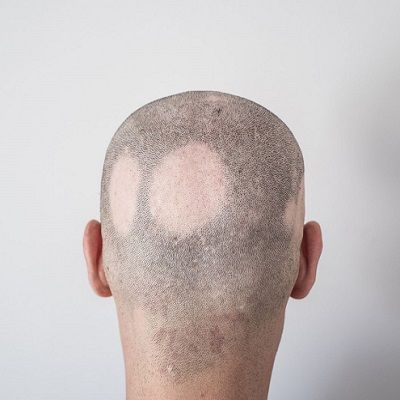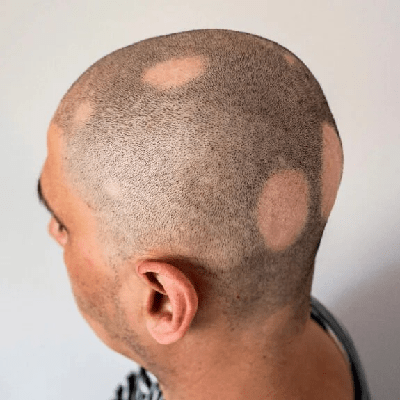
Hair plays a pivotal part in depicting the picture of a person. It is a versatile canvas for individual articulation and a huge part of one’s general appearance. The style, color, and well-being of one’s hair can convey different parts of their character and personality For the vast majority, it’s a means for communicating imagination and independence, reflecting social or cultural standards, or in any event, featuring individual inclinations and style decisions. Hair can be an image of youth, imperativeness, and engaging quality, influencing initial feelings and social communications. On the other hand, going bald can significantly affect a person. Individuals encountering going bald may wrestle with hesitance and a feeling of personality loss, particularly when cultural principles of magnificence underscore a full head of hair. Therefore, they always wonder if Can Alopecia Be Cured.
What Is Alopecia?
Alopecia is a clinical term that includes an assortment of balding circumstances. It can appear in changed structures, with the most well-known being androgenetic alopecia (male or female pattern baldness), alopecia areata (patchy hair loss), and alopecia universalis (complete body balding). The specific reasons for alopecia can shift, including hereditary qualities, immune system factors, and ecological impacts.
Treatment approaches for alopecia rely upon a particular kind and basic reason. For androgenetic alopecia, drugs like minoxidil and finasteride, hair transplantation, and low-level laser treatment are normal choices. However, a few types of alopecia, for example, alopecia universalis, can be challenging to treat, as they include completely going bald across the body.
Causes of Alopecia:
Alopecia can have different causes, contingent upon its particular type. It’s vital to distinguish the particular sort and reason for alopecia, as this can direct the decision of treatment and management. Here are a few normal causes
- Hereditary hair loss due to genetics and hormones.
- Immune system condition where the invulnerable framework erroneously goes after hair follicles.
- Serious types of alopecia areata with complete going bald on the scalp or body.
- Extreme stress, ailment, medical procedure, or weight reduction.
- Medicines like chemotherapy upset the dynamic hair development stage.
- Unnecessary pressure on the hair, frequently because of tight hairstyles.
- Going bald with scarring is frequently connected with explicit skin conditions.
- Enthusiastic hair pulling because of a mental issue.
- Going bald can result from specific meds, especially chemotherapy drugs.
- Lacking admission of key supplements, similar to iron and biotin, can prompt going bald.
- Hormonal changes during pregnancy, menopause, or because of conditions like PCOS can add to going bald.
Treatment Choices:
Hair transplantation is a medical procedure that helps to treat androgenetic alopecia (male or female pattern baldness) and various sorts of alopecia. There are two fundamental processes for hair transplantation
Follicular Unit Transplantation (FUT):
- In FUT, the doctor eliminates a portion of hair-bearing skin from the back or sides of the scalp (benefactor locale).
- Takes apart wiped-out strips under an amplifying instrument into little joins, each containing one to a couple of hair follicles.
- Makes little trims in the recipient district (the uncovered or reducing locale) where the hair is to transfer.
- Carefully place the associations into these entry points.
- FUT is a strip operation and can leave a straight scar at the receptor site. However, hair can hide these scars.
Follicular Unit Extraction (FUE):
- FUE incorporates the extraction of individual hair follicles from the donor district using a little, explicit punch instrument.
- Implants these follicles into the recipient locale, comparative as in FUT.
- FUE leaves nearly nothing, round scars at the recipient site, which are less noticeable than the immediate scar from FUT.
- FUE is as often as possible enjoyed for its immaterial scarring and speedier recovery time.
Alternative Options for Alopecia:
PRP:
PRP treatment for going bald is a non-surgical and negligibly intrusive treatment that bridles the body’s regular abilities to recuperate to invigorate hair development. The strategy includes drawing a limited quantity of the patient’s blood, regularly from the arm, and afterward handling it in a rotator to isolate the platelets, which are rich in development factors and proteins. The doctor then infuses subsequent PRP straightforwardly into the scalp in the space of hair diminishing or misfortune. The development factors in PRP advance the expansion of hair follicles, further develop blood flow in the scalp, and improve the general strength of existing hair.
SMP:
Scalp micro-pigmentation (SMP) is a restorative strategy that intends to address balding, essentially in instances of going bald or diminishing hair. Dissimilar to conventional hair transplantation, SMP doesn’t include surgical intercession. All things being equal, it utilizes microneedles and specific pigments to make the deception of hair follicles on the scalp. The doctors apply pigments carefully to the scalp in a texturing or tattoo-like design, duplicating the vibe of firmly edited hair or a shadow for hair follicles. The outcome is a characteristic and persuading appearance regarding an intently shaved head or a denser hairline. SMP is a painless, long-lasting answer for balding and people many times pick this looking for an option in contrast to surgical options.
Book A Consultation!
To get an answer to Can Alopecia Be Cured? You can consult our doctors at Dynamic Clinic in Dubai. You will have to complete the consultation form and book your appointment with our doctors for the consultation.











